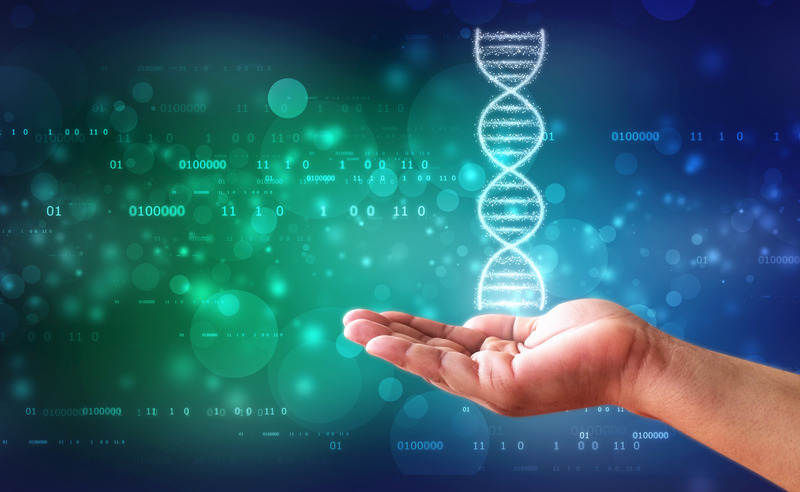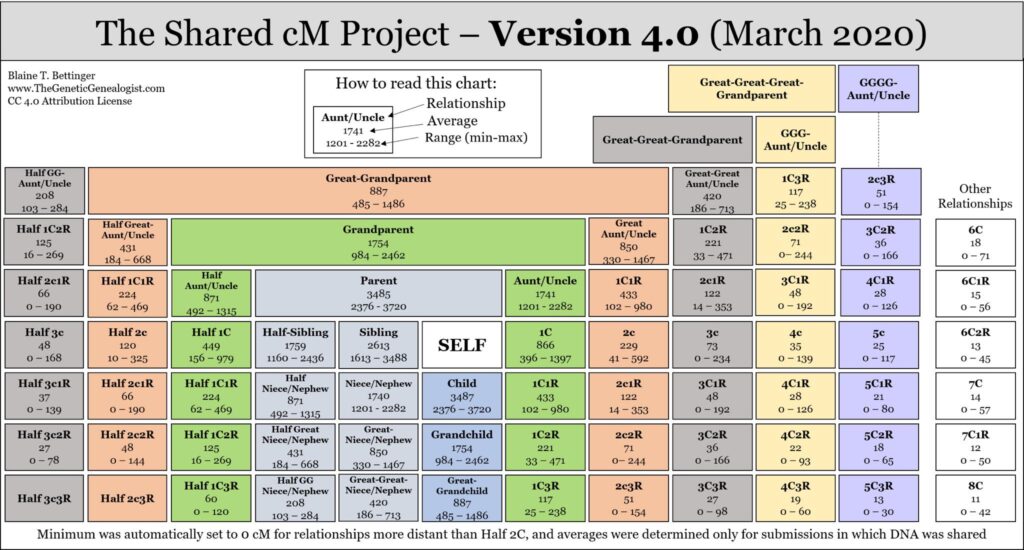
DNA is a very useful tool for genealogists. DNA works best when combined with tradition genealogical information. Like most research tools DNA testing and analysis does take time to learn. DNA websites, techniques, and resources are always changing and updating, so you also will need to keep yourself up to date.
DNA can be very helpful in breaking thru your brick walls in your genealogy. It can also help those looking to find biological parents. But keep in mind that this is not a quick-and-easy solution for finding answers to your genealogical questions.
In order to use DNA, you will need to take a DNA test. There are three types of DNA testing, so depending on what you are looking to answer will depend on the type of DNA test you take.
Types of DNA Testing:
yDNA or Y-chromosome DNA testing ~ gives information about the male’s direct patrilineal line (father’s father’s father’s father, etc.); imagine the top line of your father’s pedigree chart going back through the generations. Surnames need to be kept in mind when viewing matches unless there is a reason to think the surname may have changed because of illegitimacy, etc. Females cannot do this test (a female does not inherit her father’s Y-DNA, or she wouldn’t be female), but a female can ask a brother or paternal uncle to do the test if she wants information on her father’s line.
mtDNA or mitochondrial DNA testing ~ can be done by males or females, because males have mtDNA from their mothers. Imagine the bottom or matrilineal line on a pedigree chart, going back generations. This will give DNA information on your mother’s mother’s mother’s mother, etc. This is not dependable in terms of being helpful in research, because hitting a brick wall on a mother and her surname and ancestry brings you to a halt, and matches are often hundreds of years in the past.
atDNA or autosomal DNA testing ~ “the new kid on the block.” The analysis of these results is much more complicated than it is for yDNA or mtDNA, so be prepared to put some time and effort into learning how to use the results. There are some resources listed below. Please remember to share your family tree with others; a list of surnames, even with locations, is not anywhere near as helpful, because the time frame and the particular names are essential ingredients in identifying a “common ancestral couple” you share with matches. Also, remember that people make mistakes, and jump to conclusions, so their information may well have errors. My confidence level in someone else’s tree goes down significantly when I realize they have it on Ancestry and have been clicking on little green leaves — that’s a computer talking and not a genealogy expert, and it will be wrong at least part of the time.
Analyzing atDNA results is enhanced by testing more than one family member. The advice is to test at least two siblings and both parents, or at least one parent. The random recombination which occurs at conception means that even full siblings share only about 50% of their atDNA. Below is a chart for approximate percentages of other relatives:

The following is a list of DNA Testing websites and the types of tests they offer:
Family Tree DNA— they offer yDNA, mtDNA, and atDNA testing.
23andMe — atDNA testing
AncestryDNA — atDNA testing
My Heritage — atDNA testing
Living DNA — atDNA testing
Once you do get your results from a DNA test, in order to benefits from your results, you should be willing to share your family tree with others.
HCGHS offers workshops on various areas of DNA. See events and meetings to find out when the next workshop is scheduled.
DNA Resource websites:
The Legal Genealogist — Judy G. Russell often publishes blog articles about DNA research.
The Genetic Genealogist — Blaine Bettinger publishes blog articles about DNA research; he is one of the leading experts in the field
Kelly Wheaton’s Beginner’s Guide to Genetic Genealogy — Kelly Wheaton has written a series of articles about the use of DNA in genealogy research
Segmentology — by Jim Bartlett. This has detailed instructions on the way to triangulate matches.
DNA Explained — by Roberta Estes offers good variety of articles on the latest DNA information.
